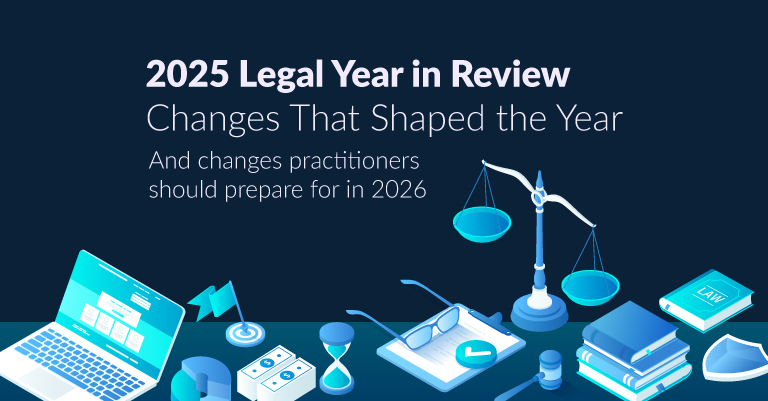As 2025 draws to a close, Australia’s legal landscape reflects another year of reform focused on accountability, fairness, and technological adaptation. From mandatory merger notifications and franchising...
Authored by Allison Lawrence, Senior Legal Writer, Technology & Innovation. Australia’s online safety framework is about to reach a major turning point. On 10 December 2025, the new age-assurance obligations...
Authored by Hayley Tam , Head of Built Environment & Disputes, Practical Guidance, and Research by Feng Emily Lizzio, Paralegal, Practical Guidance. Climate change is rapidly reshaping our physical environment...
Introduction The pressure on organisations to embrace Artificial Intelligence (AI) technology while delivering greater efficiency seems like it has never been higher than in today’s business environment...
As AI becomes more common in legal practice, many professionals are discovering an unexpected challenge: their tools don’t always work together. A typical day for an Australian lawyer might involve switching...

On 10 April 2024, Australian Federal Treasurer Dr Jim Chalmers MP announced the government’s intention to introduce the “biggest reforms to merger settings in almost 50 years” in his address to the 2024 Bannerman Competition Lecture. The full suite of reforms proposed by the government are contained in its response to the Australian Treasury’s consultation on merger settings, released as part of its two-year rolling Competition Review.
In announcing the government’s proposed reforms, Dr Chalmers called out a general decline in competition in Australia as a key reason for the merger reforms, specifically noting increases in market concentration in various industries and an increase in merger activity by big firms in Australia.
To tackle these issues, the government is proposing to replace Australia’s current voluntary merger-notification regime with a formal, mandatory, suspensory and administrative mechanism from 1 January 2026. While the reforms must still pass through Parliament, the government’s announcement provides a strong indication that significant change is coming to Australia’s merger control system.
The Australian Competition and Consumer Commission (ACCC) has been a major advocate for merger reform over recent years, with Chair Gina Cass-Gottlieb and her predecessor Rod Sims vocal that the existing merger regime, which is primarily voluntary and enforcement-based, is ill-equipped to deal with current issues in competition law. The ACCC has cited numerous failings with Australia’s current system of merger control, including courts’ reluctance to focus on structural conditions for competition, the fact that the Australian merger control regime is voluntary and non-suspensory (which the ACCC says has proved difficult when trying to obtain sufficient information from merger parties) and that it does not capture acquisitions in relation to digital platforms which may enable these operators to leverage existing dominance or control data into market power in related markets.
In addition, the ACCC has opined that current economic conditions including the cost-of-living crisis, geopolitical uncertainty, transitions to energy sustainability and advances in “gatekeeper” digital technology indicate a critical need to update the merger clearance regime to be more effective and aligned with international practice, particularly given the pivotal role of competition in driving investment and innovation.
By and large, the government has listened to the ACCC, with its proposals incorporating all but a few of the ACCC’s recommendations for reform. These include shifting to a formal system which requires merging parties for transactions exceeding certain thresholds (yet to be determined) to notify the ACCC and observe a waiting period before closing. The government also contemplates that ACCC decisions will be subject to a limited merits review by the Australian Competition Tribunal and judicial review by the Federal Court, thereby limiting the role of the court in merger decisions and moving away from the current judicial-enforcement model. Additionally, the reforms will explicitly apply to ‘creeping acquisitions’, with the ACCC having the power to consider the cumulative effect of all mergers within the previous three years by the parties as part of the assessment of the notified merger. The merger test itself has also been expanded as the ACCC will apply the ‘substantial lessening of competition’ test in section 50 of the Competition and Consumer Act 2010 (Cth) focused on its "reasonable belief" and will consider whether a merger creates, strengthens or extends market power. The changes also include new set timelines and filing fees for merger applications.
If passed by Parliament, the proposals mean that Australia’s merger process will become more formal and less flexible. There will likely be increased costs and administrative burdens involved in seeking merger review clearance, which will need to be considered in the early stages of merger planning. Businesses contemplating merger activity will need to build in the new mandatory regime into their transaction processes, completion timeframes and terms, ensuring sufficient time and resources to apply for and obtain approvals.
Refer to our infographic below for a quick reference guide to the government’s proposed merger reforms, including our key takeaways on implications.
Contact your Relationship Manager for more in-depth information on our Practical Guidance Competition module. Alternatively, email Sales.Enquiries@lexisnexis.com.au or call us on 1800 772 772.




